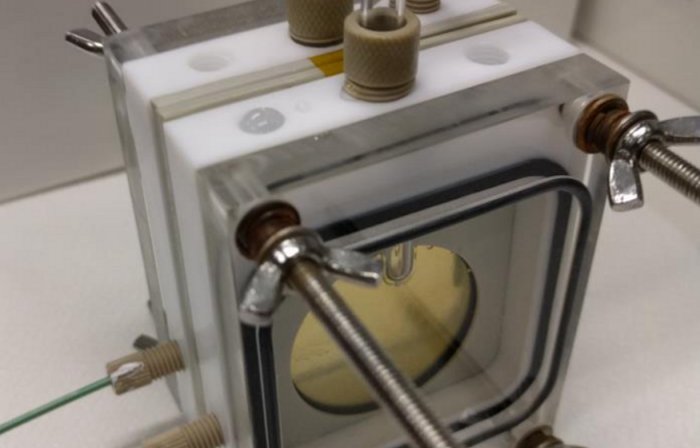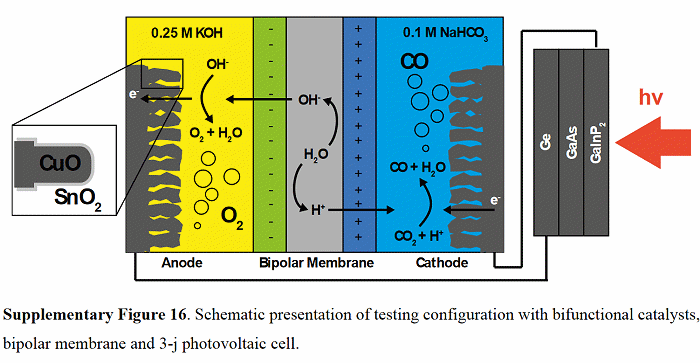
In another example of how solar power could help address the mess created by fossil fuel use, researchers have unveiled a new process for the solar-driven electrochemical reduction of carbon dioxide into fuel components.
Scientists at Ecole polytechnique fédérale de Lausanne (EPFL) in Switzerland have constructed the first “earth-abundant” and low-cost catalytic system for splitting CO2 into CO (carbon monoxide) and oxygen.
In the presence of oxygen, carbon monoxide burns. Coal gas (not to be confused with coal seam gas), which was used extensively in the 1950’s and 60’s, is an example of a fuel with a significant level of carbon monoxide.
The catalyst EPFL developed is based on copper-oxide nanowires coated in tin oxide. A solar-driven system using a triple-junction solar cell (GaInP/GaInAs/Ge) and the catalyst achieed a splitting efficiency of 13.4%.

“This is the first time that such a bi-functional and low-cost catalyst is demonstrated,” says PhD student Marcel Schreier, one of the developers. “Very few catalysts — except expensive ones, like gold and silver — can selectively transform CO2 to CO in water, which is crucial for industrial applications.”
Another of the developers, postdoc Jingshan Luo, said the team’s work sets a new benchmark for solar-driven carbon dioxide reduction.
While burning carbon monoxide creates carbon dioxide again, “reverse combustion” is seen as a way of helping to close the anthropogenic carbon cycle.
The team’s research has been published in the journal Nature Energy. The work occurred in the lab of Michael Grätzel at EPFL, who is best known for his invention of dye-sensitized solar cells; also known as “Grätzel cells”.
Utilising solar energy to split carbon dioxide has had the attention of scientists for some years. Back in 2007, researchers at Sandia National Laboratories were tinkering with a parabolic solar concentrator as part of a system to convert carbon dioxide into carbon monoxide.
NASA has also been working on converting CO2 to fuel utilising solar as part of its Technology Transfer Program. The Administration has developed what it states is a low-cost nanomaterial photoelectrochemical thin-film device that can capture carbon dioxide emitted in industrial processes and convert it to methane.
“By converting CO2 to fuel before it is emitted to the atmosphere this technology can mitigate the effects of the burning of fossil fuels,” says NASA.

 RSS - Posts
RSS - Posts



Speak Your Mind